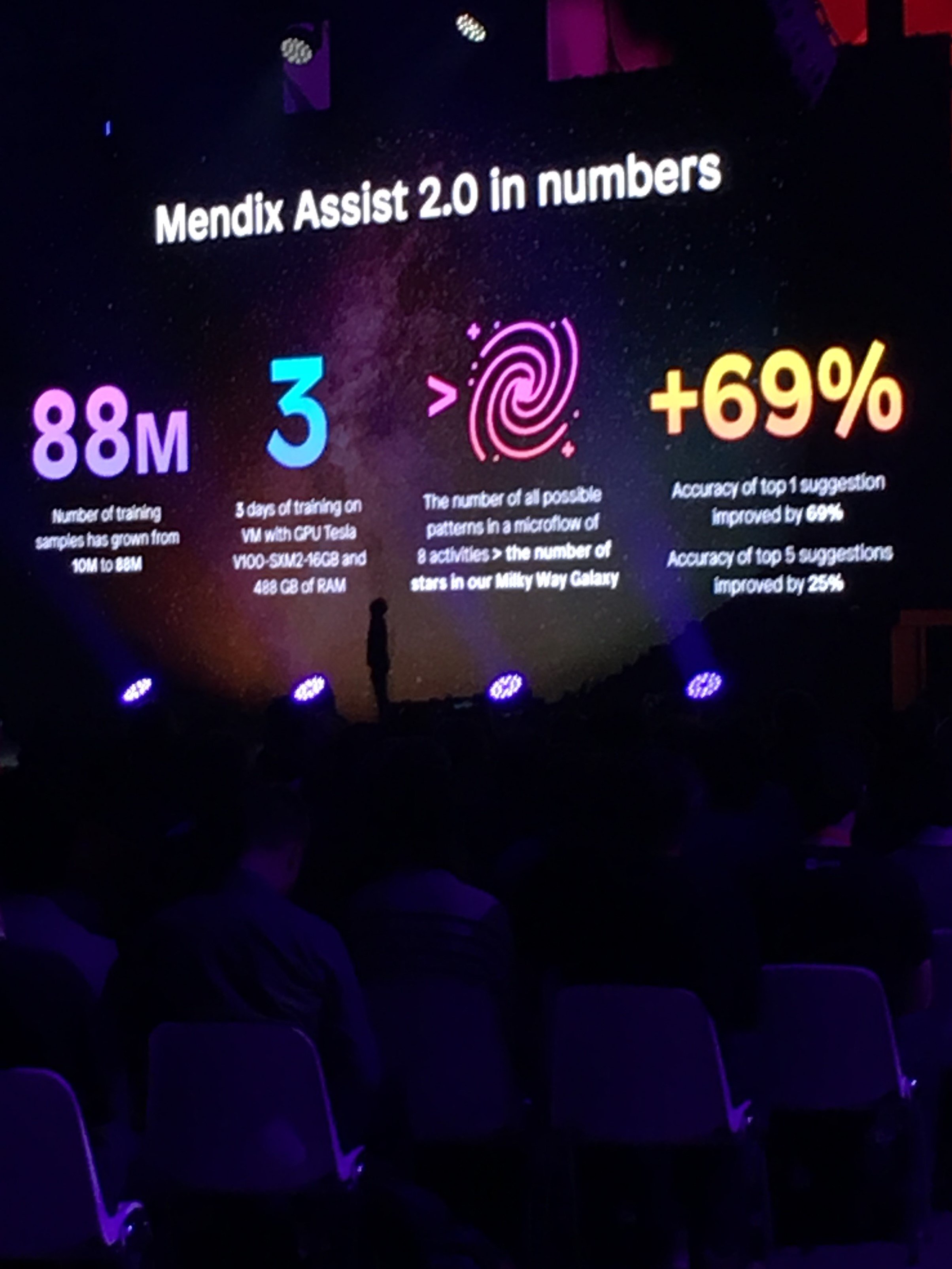This year’s Mendix World in Rotterdam was the largest yet with over 5000 attendees. The event was jam packed with announcements, but here are the five (5) highlights most relevant new and existing Mendix customers with 'Key Takeaways' for you to consider.
For context, Kinetech’s management have been active in the Mendix ecosystem since 2010 (first as employees, then as a partner starting in 2014). It’s remarkable to see how far Mendix (the company) and Mendix (the platform) has evolved in the last 9 years. Without further ado, here are the biggest takeaways from the event for business, innovation, and IT leaders to consider:Siemens Acquisition - Stability & Investment Acceleration
When Mendix announced they were being acquired last fall by Siemens, initially I had some concerns. After attending the partner day before Mx World, it became clear this is a net positive for the lowcode market and Mendix ecosystem. Let me explain.
Before the Siemens acquisition, Mendix’s growth was financed organically through happy customers and by some industry leading venture capitalists (VCs). VCs typically have a seven to ten year horizon for their investments. Contrast this with Siemens, a 170+ year old German stalwart, known for playing the long game.
Mendix is leading low-code with 235k Apps Created in 25+ Industries.
Key Takeaway:
Siemens is committed to digital transformation, has a bulwark balance sheet, and is accelerating investment in the lowcode space via the Mendix roadmap. If you were considering lowcode, but were concerned about adopting technology backed by VCs, you can rest easy knowing Siemens has been around for 170+ years and is playing the long game. As a top 10 global software provider ($4 Bln+ revenue in 2018), management teams now know investing in a Mendix license / platform is an investment in BOTH innovation and stability.
Native Support for SAP HANA
For enterprises running SAP, this is a big deal. From the joint release, the partnership is expecting customers leveraging both Mendix and HANA to recognize performance gains, and analytics capabilities. The biggest gains will likely come via performance for applications with large databases as HANA has “highly scalable in-memory technology.”
Key Takeaway:
At Accenture, I witnessed time and again clients struggling to balance necessary customizations (for their unique business processes) with the stability of a proven ERP. Customizing SAP or Oracle directly led to significant (and costly) challenges when trying to upgrade from one version to the next. With this announcement, enterprises can feel confident keeping their ERP implementations “vanilla” and use Mendix (the official name is a mouthful: SAP Cloud Platform Rapid Application Development by Mendix) for devOpps / agile innovation and customization. A true win / win for enterprise clients.
Native Mobile
While connectivity is increasing around the globe (with the rollout of 5G), there are still scenarios when applications need to work offline. While it is possible to deploy web apps to the App or Play store, developers had to leverage PhoneGap / Cordova to access the native APIs to leverage camera, GPS, etc.
Key Takeaway:
True native apps perform better. During the conference we got to see the first beta version of a Mendix native mobile app from Rabbobank (via Finnaps) and the performance was lightning quick! This is not mandatory for all applications, but it’s nice for specific use cases. With React Native, the app is built for offline first and can be controlled as to how and when it connects online. Direct from the Mendix press release, true native mobile capabilities available with Spring ’19 Release include:
- Critical native UI components, including maps, slider, progress circle, progress bar, tab container, and barcode scanner. Developers can also build their own reusable components based on React Native.
- Key native device capabilities, including camera, geolocation, Touch ID, Bluetooth, pull to refresh, and infinite swipe to go back. For additional capabilities, a new built-in JavaScript editor empowers developers to create their own reusable device activities.
- Offline-first features such as improved synchronization handling, and conflict resolution.
Data Hub:
Building a true microservices architecture requires the management and monitoring of the various assets (data, events, APIs, functions, or even other apps). We know very little about how this will actually work in practice, but from the announcement, the Mendix Data Hub is designed to abstract data and systems into a data virtualization layer that spans the entire enterprise.
Hypothetical Microservice Architecture
From the press release:
“Users will discover the assets they need through a data catalog, whether those assets are data, events, APIs, functions, or even other apps. Then they simply drag-and-drop them into the applications they are building inside the Mendix application platform. There is no need for additional integration middleware — Mendix Data Hub automates the process. To ensure sound governance and adherence to best practices across the enterprise, the data catalog will be curated by experts in the specific data and resources, who will control permissions for access and usage.”
Key Takeaway:
Mendix pioneered the lowcode market by abstracting technical code writing into visual, Visio-like, models that allow business engineers to create applications 6-10x faster. They are now attempting to do the same for data management. The Mendix data hub will attempt to bring organization and discoverability to the complex web of applications and digital services within an enterprise. This has the potential to breakdown siloed data.
Machine Learning (“AI”), Augmented Reality (AR), and IoT
During Johan’s (CTO of Mendix) keynote, he demonstrated Mendix Assist 2.0, the machine learning algorithm that can accurately predict with ~70% accuracy the likely next event in a given microflow. For reference, a simple microflow with eight (8) actions has more possible configurations than the number of stars in the Milky Way (a lot).

Perhaps the biggest, “...and one more thing!” (to quote the late Steve Jobs) is Mendix supported Augmented Reality (AR)! The R&D team at Mendix showed a neat application previewing the existing capability to connect with Internet of Things (IoT) sensors, with an Augmented Reality overlay. Your imagination can run wild with potential opportunities and use cases, but for now, we will have to wait for the Spring 2019 release!
AR / IoT Demonstration showing a Heineken beer crate with IoT sensor tracking temperature beneath as seen through the lens of a Mendix AR application (viewed through device camera).
Key Takeaway:
The physical and virtual worlds are continuing to merge and Mendix continues to be at the leading edge of software for the enterprise. An investment in an annual license grants you access to countless innovations with the only limit being your creativity / ability to incorporate them into your organization to create value.
Conclusion:
Mendix World 2019, did not disappoint. As a platform partner, Kinetech, is excited to bring these innovations to our clients as the become available in Mendix 8. If you have questions about Mendix, lowcode, or digital enablement, don’t hesitate to reach out directly or through our website: www.kinetechcloud.com

.png?t=1478593658884&height=230&name=download%20(6).png)


